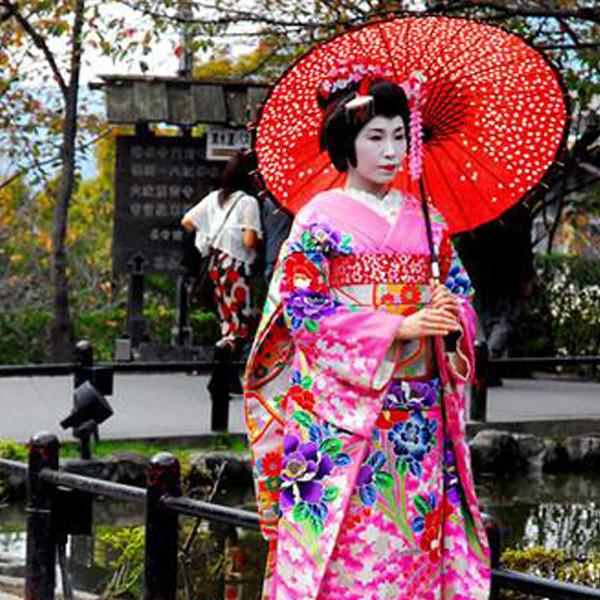
Last week a friend of mine who is planning a trip to Japan this summer asked me if I knew where she could find a vintage kimono in Tokyo.
I must confess that I wasn’t really prepared on the matter although I am a big kimono lover. I have never been to Japan (even if I plan to go in the next future) then I didn’t study enough to give her a good answer.
I decided to fill this empty space of my vintage knowledge and I made a good research online to know more about this iconic Japanese clothing piece that I really adore. I have a nice one in my closet, a vintage piece that I bought in a beautiful vintage shop in Brussels a few years ago, but I still dream of having a silk flowery long one with an original obi (the typical Japanese large belt that goes with it) once I will be able to buy myself one in Tokyo.
I learned that they are very expensive locally but I found a couple of address to buy vintage or used pieces for very good prices (I gave the addresses to my friend but I also saved them for myself!); if you are interested there are also good online addresses if you don’t want to try Etsy or Ebay or if you don’t want the vintage ones that you can easily find in vintage fairs, markets and shops.
I was so intrigued by this online research that I also found out more about the history of this amazing piece that is also a huge fashion trend lately.

The kimono made its first appearance in Japan during the Heian Period (about 795-1185). It seems that Japanese women used to wear it with a long skirt called hakama or a sort of apron called mo that helped to keep the kimono closed. Once the fashion abandoned these two pieces, obi made their appearance.
During the Kamakura Period (about 1185-1335), the kimono added more and more layers and colors: the patterns were more important as they represented the iconography of the era. Kimono was a daily worn piece and it was very popular because it was very versatile: it could be worn in every season depending on the fabric and layers. It is only during the Edo Period (about 1605-1870) that the kimono became an art and that kimono handcrafters created the most beautiful and expensive pieces of art that were part of a family legacy.
Since then, this piece remained the iconic piece that we know nowadays even if with time it lost its everyday use. The complexity of wearing kimono and cumbersome sandals made it lose its daily use to the benefit of more comfortable pieces. Moreover during the Meiji Period (about 1870-1910) kimono was almost banned by the government that encouraged people to adopt Western clothing styles.

Nowadays, Japanese people rarely wear kimonos in everyday life, reserving them for such occasions as weddings, funerals, tea ceremonies, or other special events, such as summer festivals.
As for Western countries it has still its undeniable charm and it is definitely one of those pieces that every woman should have in her closet.
While waiting for my next trip to Japan to buy a second one, feel free to share more addresses of local stores where I can find it!
See you next month then with a new story of The Vintage Series!
Vintage Love,
TLC
If you want to know more about me or contact me you can visit my blog www.theladybugchronicles.com, like me on Facebook (www.facebook.com/vintagetlc), follow me on Twitter (www.twitter.com/TheLadybugC) and Instagram (www.instagram.com/theladybugchronicles)




